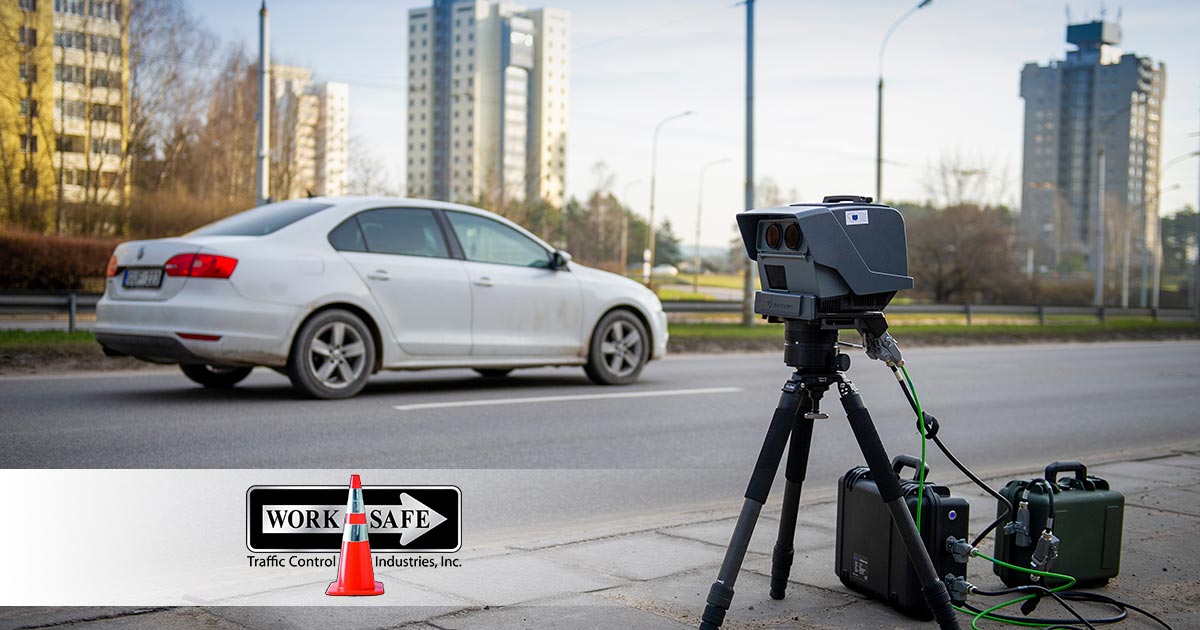
Traffic detectors are the first step to creating a smart city. With these devices’ help, we can control traffic and detect where exactly the problem is happening.
Traffic detectors are commonly used in traffic lights but can also be used in other situations where people need accurate vehicle information. Worksafe Traffic Control Industries will discuss what a traffic detector is and how it works, so read on.
What is a Traffic Detector?
A traffic detector is a device that detects the presence of vehicles in a road, lane, or intersection. Detectors can be loops, microwaves, infrared, or laser detectors.
Traffic detectors are often used to count the number of cars passing through an area to determine whether it is safe for a light to turn green or if more time is needed for pedestrians crossing an intersection where there are no traffic signals.
In some cases, detectors are used to inform traffic signal operations. A detector will tell the controller if any vehicles are present in an intersection so that it knows whether or not to change the light.
Other functions of traffic detection devices include measuring vehicle speeds, how long it takes for vehicles to get from one location to another, and congestion levels. Additionally, they may also be used to detect parking availability, collect weather data, and monitor near-collision misses.
Importance of Traffic Detectors
Traffic detectors are important for several reasons. The first is that they help ensure the safety of both pedestrians and drivers. The second reason is that they can reduce traffic congestion by helping drivers avoid traffic jams and providing real-time information about road conditions.
The third reason traffic detectors are important is that they help regulate the flow of traffic, which in turn helps reduce vehicle emissions on the road.
Finally, traffic detectors also allow cities to collect data on air quality and noise pollution, which can help make informed decisions about improving these issues in their communities.
Types of Traffic Detectors
There are two types of traffic detectors: in-roadway detectors and over-roadway detectors.
In-roadway detectors are typically embedded into the pavement in the center of a lane or on the side of the road. These detectors can be used to detect cars and trucks, as well as bicycles and pedestrians. The most common types of in-pavement sensors are inductive loop detectors and video image processing systems.
Loop detectors and pressure mats are forms of in-roadway detectors.
Loop detectors consist of a loop of wire embedded in the road surface, though they can also be buried under concrete or asphalt. The loop detects vehicles by their metal bodywork and generates an electric current when this happens. This allows the loop to count the number of vehicles that have passed over it.
Pressure mats are another type of sensor that detect vehicles by sensing their weight. They are often placed at intersections or other places with high traffic flow so that they can accurately count how many vehicles have passed through each lane. Pressure mats typically use piezoelectric technology to detect very small weights, such as those from bicycles and motorcycles, and larger ones, like trucks or buses.
Over-roadway traffic detection trailers are located above the highway, such as on a bridge or overpass. They can detect large vehicles like trucks or buses, but they need to be more effective at detecting smaller vehicles like cars and motorcycles. Over-roadway detectors include cameras, radar, Bluetooth sensors, and weather sensors.
Traffic Detector Data Can Be Used for Traffic Management and Adaptive Control
Detector information can be used for both traffic management and adaptive control.
Traffic management identifies, analyzes, and manages traffic situations to improve performance and reduce congestion. Detector information can be used to detect incidents occurring on the highway.
Adaptive control refers to a system that detects disturbances based on historical data and then uses this information to adjust its operation in response to current conditions. The goal of adaptive control is not only detection but also reaction.
Conclusion
Traffic detection is a crucial part of transportation systems, and it’s important to understand how they work. Traffic detectors detect vehicles in real-time, which can be used for traffic management and adaptive control.
There are many different types of traffic detectors out there. Still, it’s important to use products like those manufactured by Worksafe Traffic Control Industries because they are produced according to the Manual Uniform Traffic Control Devices and certified as such. This certification ensures that the product meets all safe operation and installation requirements. Contact us today to get started!

